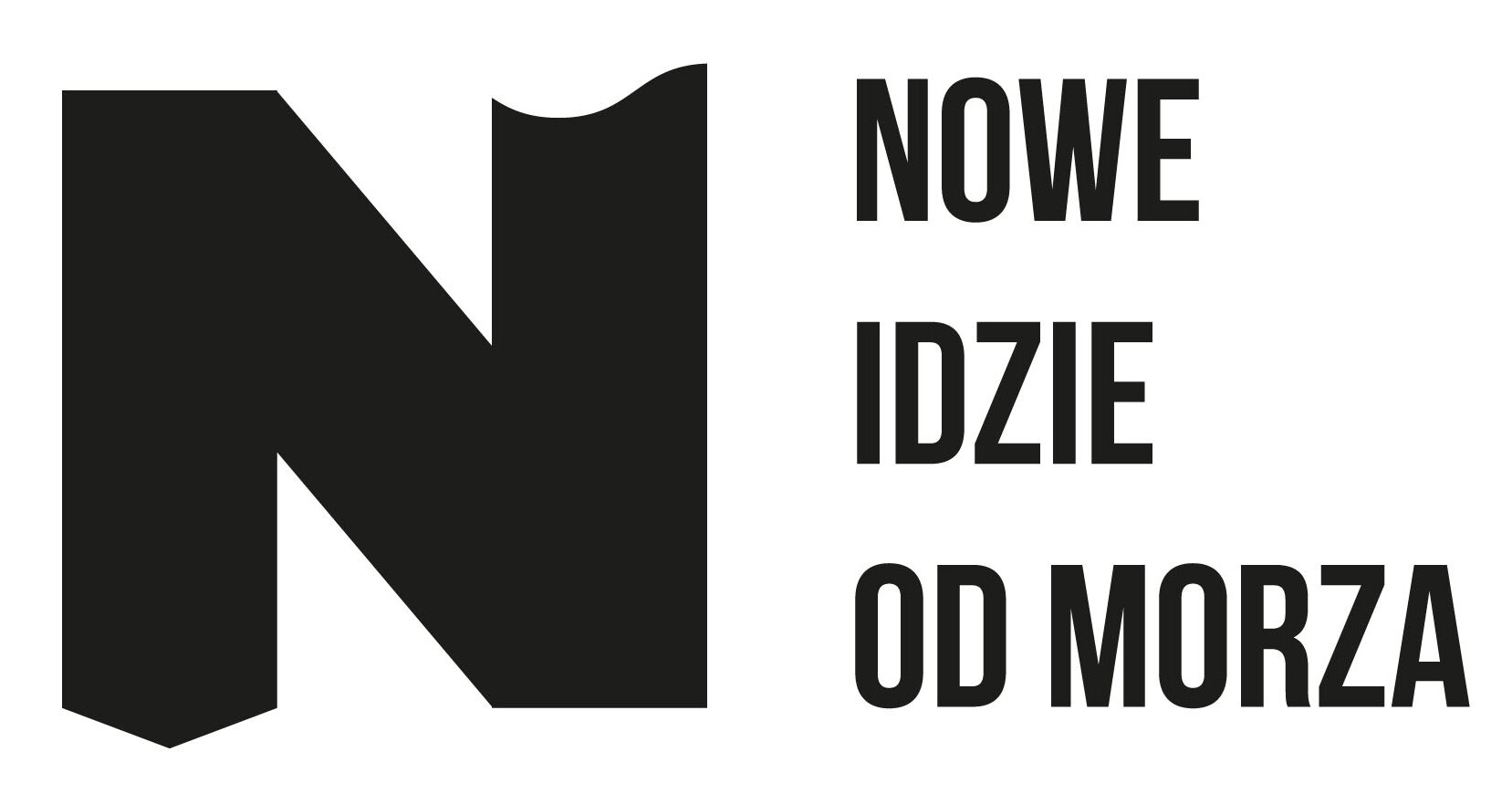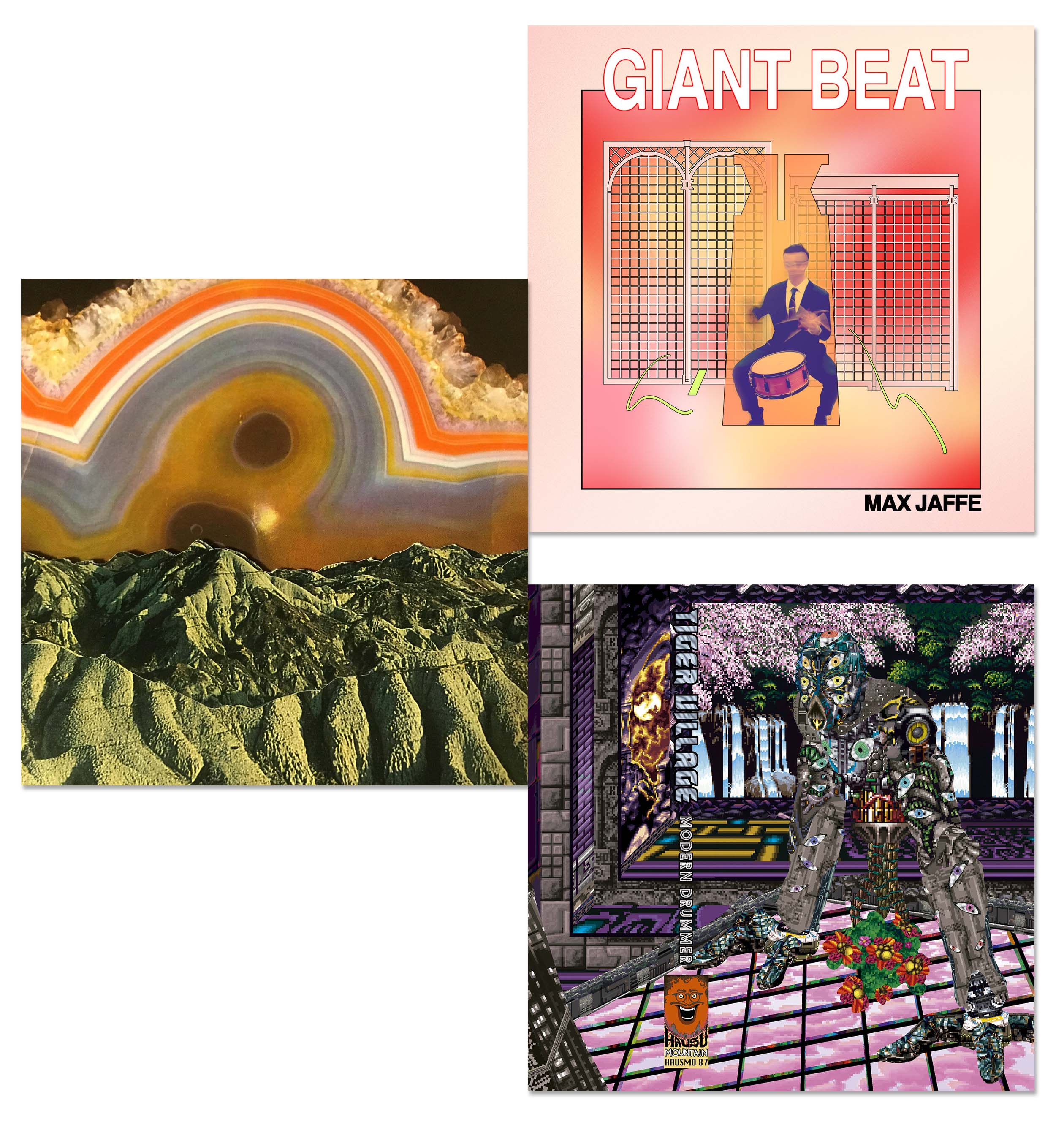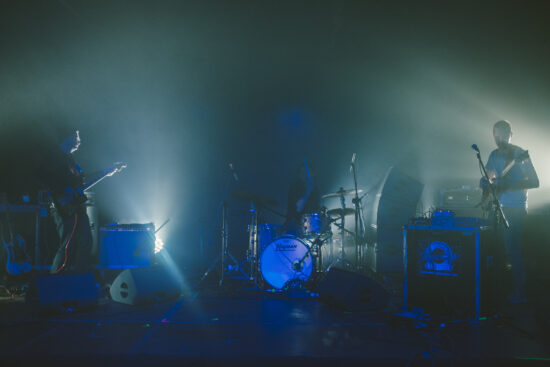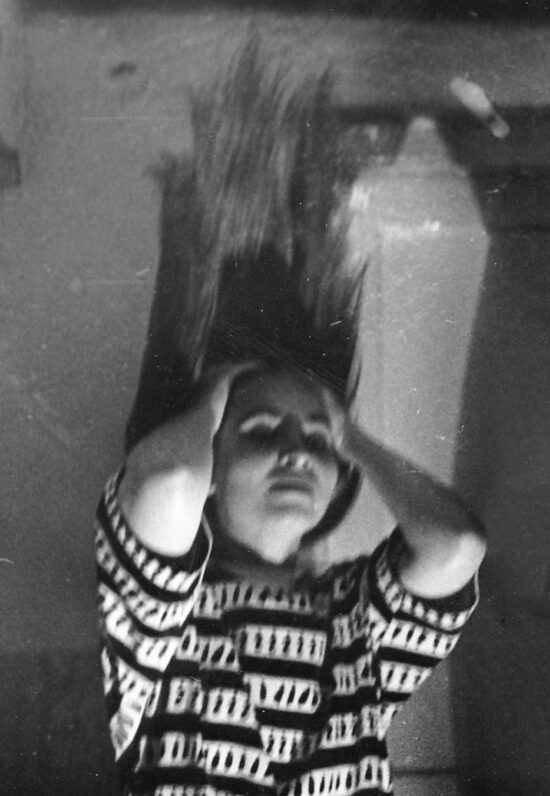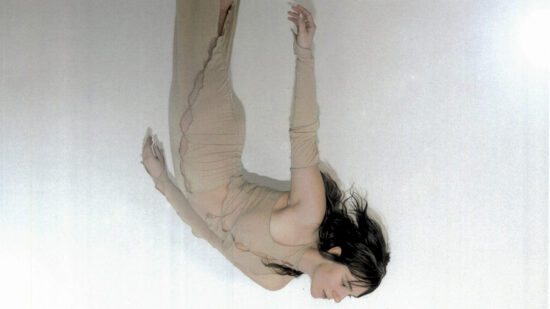Three brilliant connections of percussion with electronic sounds. Wojtek Kurek combines the sound of the instrument with electronics and records his best solo performance. Max Jaffe use sensory percussion to create unobvious rhythmic music. Tiger Village sampling percussion in many ways and creates a colorful musical cocktail.
Translation: Aleksandra Szkudłapska
As the year unfolds, the crop of interesting percussion-based records is growing ever richer: both those whose authors focus on the acoustic instrument and those where solo drumming meets a variety of electronic sounds. Hence you may expect some common features in the latest albums by Wojtek Kurek, Max Jaffe and Tiger Village.
Kurek plays with a lot of musicians in a lot of projects, as we may find out from his website (I wouldn’t mind it if more artists were to mirror this format). I first heard him doing an original take at alternative rock in Bubble Pie, then with Paper Cuts (and also in duos with Arszyn and Tomasz Duda), but what drew me to him most were the solo experiments aimed at getting the maximum sound out of an acoustic drum kit. I was intrigued by all of his solo records, but Ovule, a sum of his experience so far, strikes me as the most coherent, consistent and thought-out. From sonorous passages and subsurface pulsation to synthetic, electronic layers, sometimes delicately gleaming from behind the percussionist cacophony, at other times moving to the foreground – the dense magma of music is quite impressive. Kurek is all about short forms and steers clear from lengthy, improvisational outings – all credit to him for that.Subsequent pieces vigorously follow each other, the music is smooth, but there’s no waffling. Coarse scrapes on the membrane are counterpointed with high-pitched electronics and beats on the drum pedal, played as if in passing. Textures and timbres are what’s important here – sometimes peculiar rhythmical acrobatics, at other times building a compact sonic tissue. All tracks have very digitalised titles, as if they represented algorithms of sorts – drums and electronics go head to head in full symbiosis. Nor is there any sense of overdoing things – acoustic sounds are brilliantly balanced with the more dehumanised ones. Kurek, for his part, skilfully manoeuvres between them and improvises in what is his best solo album to date.
Max Jaffe is an equally active musician with an equally packed portfolio (I also recommend his website), whom you may hear accompanying Amirtha Kidambi in the Elder Ones or in the brilliant band JOBS. However, Jaffe is similarly often a solo artist, usually playing Sensory Percussion, which – using special triggers connected to drums – turns the instrument into a sampler reacting to the strength of the stroke and the place on the membrane hit with the drumstick. This instrument is used by the likes of Eli Keszler and Greg Fox, but Jaffe is the true ambassador of this project, and Giant Beat shows how this tool may be put to interesting use without obscuring the compositional layer. Where Keszler treats drums as a sampler for playing post-ambient, fluid forms, and Fox simply as a base of sounds meant to highlight the ideas in his compositions, Jaffe basically creates live electronica on drums. This is already clear in the smooth and very appealing opening track “Harmonik” – with a distinct rhythm, bursting with ideas (one ought to remember that this was not a cut-and-paste of samples, but regular, evocative playing live). It is followed by “Beta Gem”, which makes it even clearer – the minimalist strokes grow denser thanks to linearly added elements, gradually sampled in, yet without overdoing it, with an Aphex-Twin-like ambient feel in the background. Jaffe is generally much closer to the contemporary electronic scene, with its often broken beats – there are moments when tracks such as “The Rake”, for example, sound almost like breakcore, especially given the loud and raw noise in the second half of the piece. The more atmospheric “Harro Wood Block” is an interesting counterpoint. In fact, rather than offering an unbridled demonstration of the potential of his instrument, Jaffe does the same through a set of thought-out pieces, focusing – from the rhythm to the details – on the possibilities offered by the Sensory set. Jaffe goes off the beaten path in terms of electrified drums, using their sonic potential to play electronic music with a prominent human factor. Very refreshing.
I don’t know half as much about Tim Thornton, who uses the moniker Tiger Village, as I do about his predecessors, although his CV is similarly packed. Over the last 6 years he has already released nine albums, but it’s the latest, tenth one, released by progressive Hausu Mountain, that I’m interested in here. A word of introduction might be in order: this is a very intriguing label, which reminds us that Chicago is not only about jazz and free jazz to (from Ken Vandermark to International Anthem), but that it’s also home to some really amazing electronic artists. For instance, HausuMountain released Eartheater’s first albums, Mukqs’brilliant synthesizer show-offs and acoustic solo saxophone records by Andrew Bernstein (of Horse Lords fame). Yet what the label is really focused on is exotically sounding electronics: informed by the synthesizer legacy, somewhat vintage, somewhat broken, and winking at new age. Tiger Village (this is his third album on the label) seems to mock his approach to drums already in the title of his album, referring to the well-known music magazine (I strongly recommend taking a look at this set of covers). He uses the instrument almost in the free-jazz spirit, the only difference being that he multiplies his tools. Where Kurek sometimes sounds like Autechre and Jaffe like Aphex Twin, Thornton grinds and turns up his ideas – even if he does model himself on the representatives of the electronic scene, he plays with the tempo of his pieces, the intensity of his sounds, the ever denser cascade of rumbling electronic percussion. The drum kit as instrument is not the most important thing here, but the sonic potential of future drumming – modified by sampling, synthesizer sounds, sometimes mirroring the pap offered by pop culture. This is shaky, nervous music: dry-sounding hi-hats are backed by sampled strokes of drumsticks somewhere far off, and counterpointed by dense synthesizer parts and low bass tones. There is a circus feel to the album – everything is mixed up with everything else and the music is crazily intense (and yetstill somehow makes sense). This is a really rich synthesis of ideas, sometimes reminiscent of Thornton’s predecessors (“Soft, Real” of Kurek, “Beat Tape” of Jaffe) – and I don’t mean it as a fault, obviously, but rather a proof that drums really do offer a variety of possibilities, as demonstrated by these three records.
Wojtek Kurek, Ovule, Pawlacz Perski
Max Jaffe, Giant Beat, Not on label
LISTEN: 🎶 Spotify 🎶 Tidal 🎶 Deezer 🎶 Apple
Tiger Village, Modern Drummer, Hausu Mountain
LISTEN: 🎶 Spotify 🎶 Tidal 🎶 Deezer 🎶 Apple
